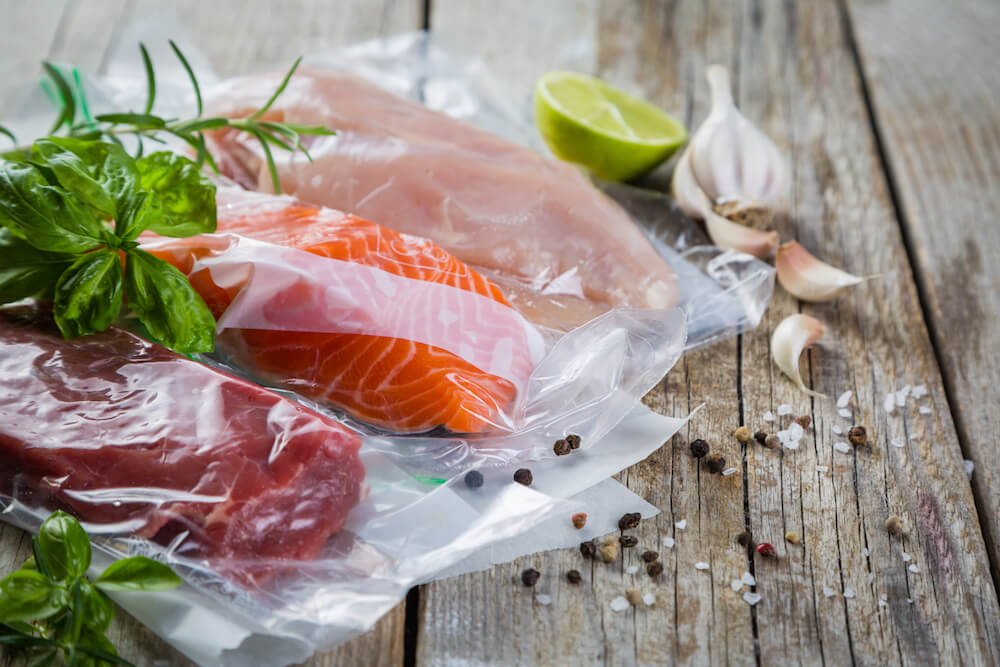
For many years now, chefs at some of the most prestigious restaurants in the world have been using a technique called sous vide to prepare food to the most exacting specifications time after time. Food cooked sous vide (French for “under vacuum”) comes out perfect every time, and with much less hassle and almost no attention while it’s cooking. It’s the high-end version of “set-and-forget”.
Sous vide cooking has recently gotten more mainstream attention with the advent of affordable home cooking devices. Still, many people are confused about how sous vide cooking works. This is your guide to understanding everything you need to know about sous vide cooking, so you can make an informed decision on whether to buy a sous vide cooker for yourself or for someone you know.
How Does Sous Vide Work?
First, the basics.
Sous vide involves sealing food in plastic and then immersing it in water that is the precise temperature that you want the finished food to be. As the name implies, the food is often vacuum sealed in order to increase cooking efficiency and achieve the most consistent possible results, but it actually doesn’t have to be. If you’re cooking at home, you probably don’t care whether your steak would be perfect enough to be worthy of a 3 star Michelin restaurant. As long as you don’t screw up something basic (like setting the wrong temperature or, I don’t know, forgetting the plastic bag), the results you will get from sous vide cooking will far surpass any other kind of cooking you have ever done. For most foods, you can actually just clip the top of the bag to the rim of the pot so that the food hangs down into the water. This means that a vacuum sealer is not strictly necessary to take advantage of sous vide at home.
Types of Sous Vide Cookers
There are two basic types of sous vide cookers available for home use: immersion circulators and water ovens.
An immersion circulator is a small electronic device that clips onto the edge of a cooking vessel (like a stainless steel pot). You set the desired temperature, then clip the device in place and wait for the water to heat up, which happens in a matter of minutes – typically 5 to 30 minutes, give or take, depending on the machine and depending on the temperature of the water when you start (here is a nice comparison of warming times for different sous vide cookers).
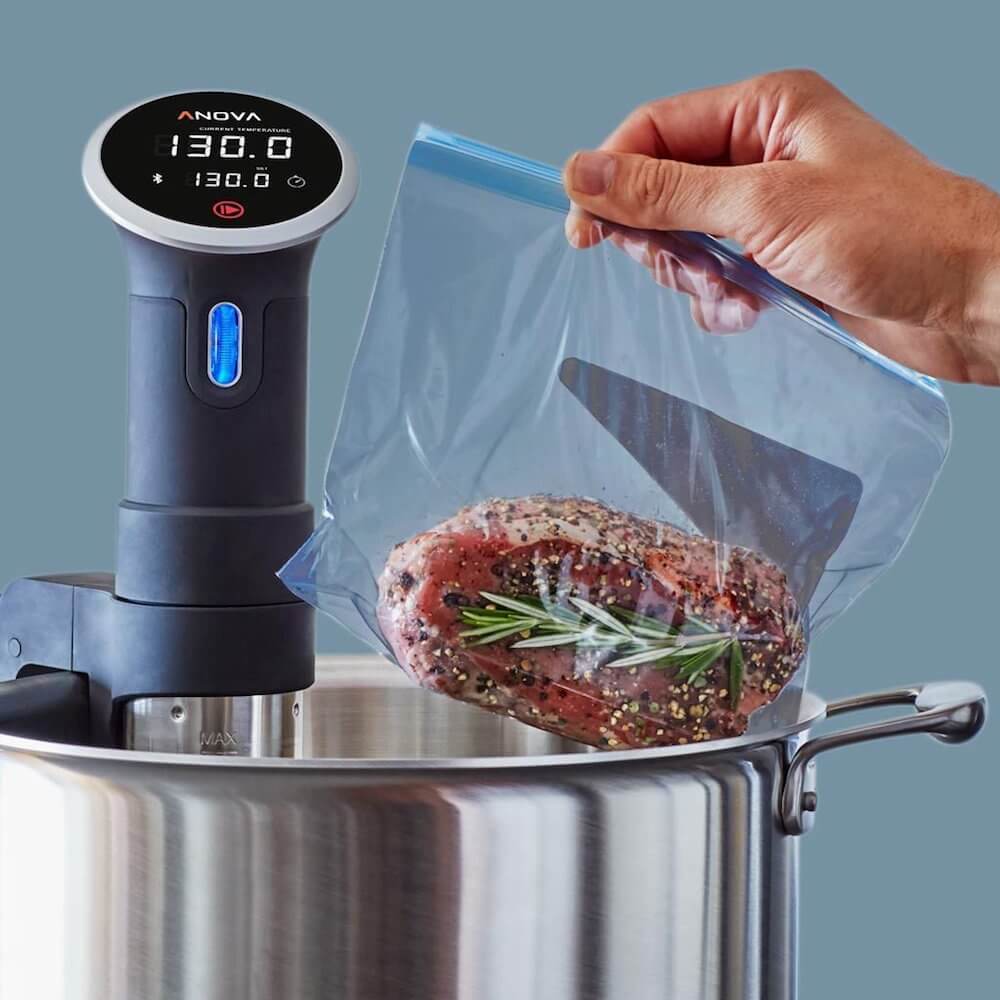
A water oven, on the other hand, is an all-in-one device. Common sous vide water ovens hold somewhere between 8 and 11 liters (approximately 2 to 3 gallons). They are about the size of a microwave, and tend to cost more than immersion circulators.
Both types of machines have their pros and cons. Immersion circulators are cheaper, easier to store, and more versatile, as they can be used with any cooking vessel. One of the advantages of a water oven, on the other hand, is the built-in lid. It can be difficult to cover a pot with an immersion circulator attached to it. This mostly becomes an issue with foods that require longer cooking times, due to potential evaporation. It can also affect how fast the water heats up initially.
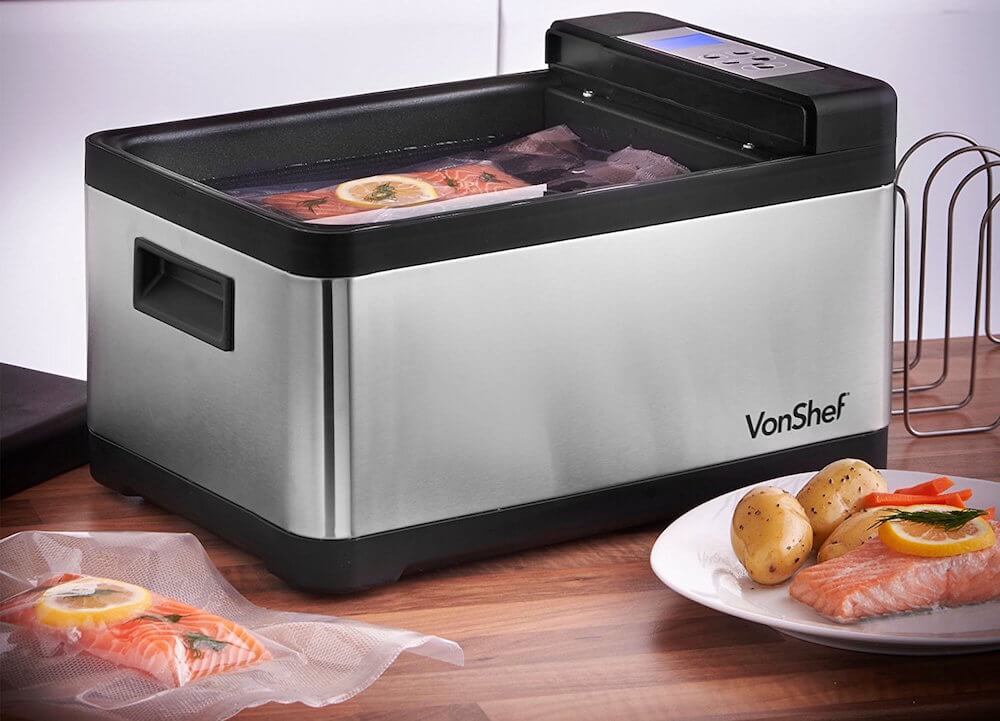
Benefits of Sous Vide Cooking
As we mentioned before, the primary advantage to sous vide cooking is the amazingly consistent and predictable results. There really is not another cooking style on earth that can come close to it. Why is that? Glad you asked.
The fundamental difference is the fact that the water is precisely the temperature that you want the food to be when finished (and we mean precise, like within a few hundredths of a degree with a quality sous vide cooker). This is completely different from cooking food by conventional methods, for instance in an oven, where the ambient temperature is far higher than the finished temperature of the food.
For example, think about baking a salmon fillet. The recommended internal temperature of the fillet when it’s finished is 145°, but the oven temperature is going to be somewhere around 350-425°. You do this because cooking the salmon in a 145° oven would take forever. So as the salmon sits in the oven, its temperature slowly rises, and it’s up to you to take it out when it reaches 145°. Wait a few minutes too long, and it’s ruined. Wait until it reaches its resting temperature (the temperature of the oven), and it’s on fire.
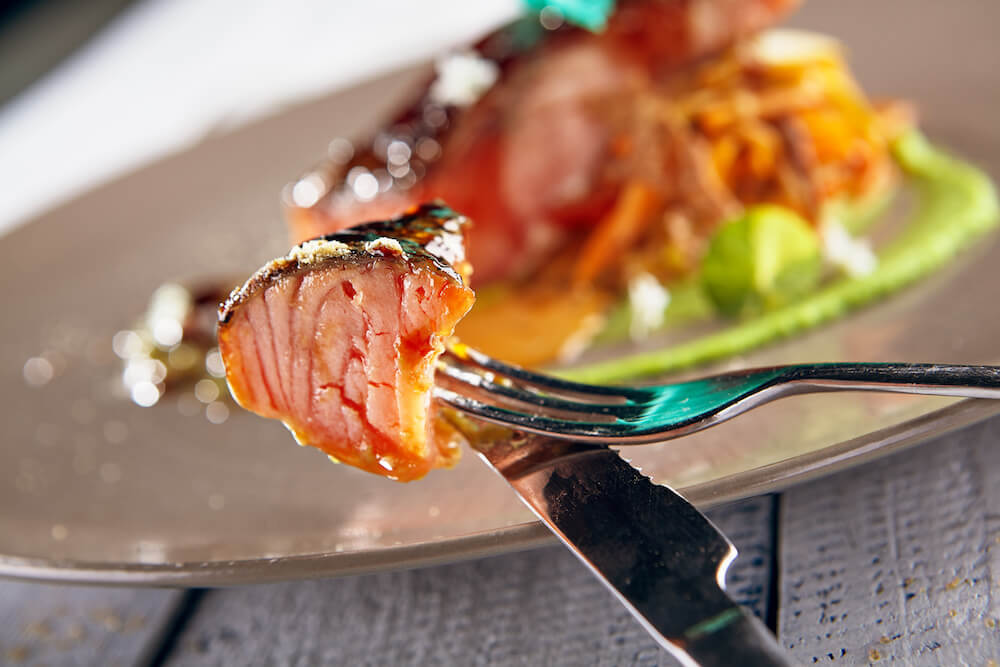
With sous vide cooking, there is no guesswork. Since you set the water to the exact temperature of the finished food – in the case of the salmon, 145° – you can let the food rest in the water after cooking for as long as you want. It won’t keep cooking like it would in a regular oven.
Furthermore, sous vide produces food that is cooked through uniformly. This is most noticeable with meat and fish. Think about what a typical medium-rare steak looks like when it’s cut open. The outsides will be charred, the center will be dark red, and the area in between will be brown. A medium-rare steak cooked sous vide will be the same color and consistency from edge to edge. And how many times have you had a salmon fillet that is perfectly cooked in the middle, but hard and dry at the ends? This never happens with sous vide. The entire fillet will be the same temperature and consistency.
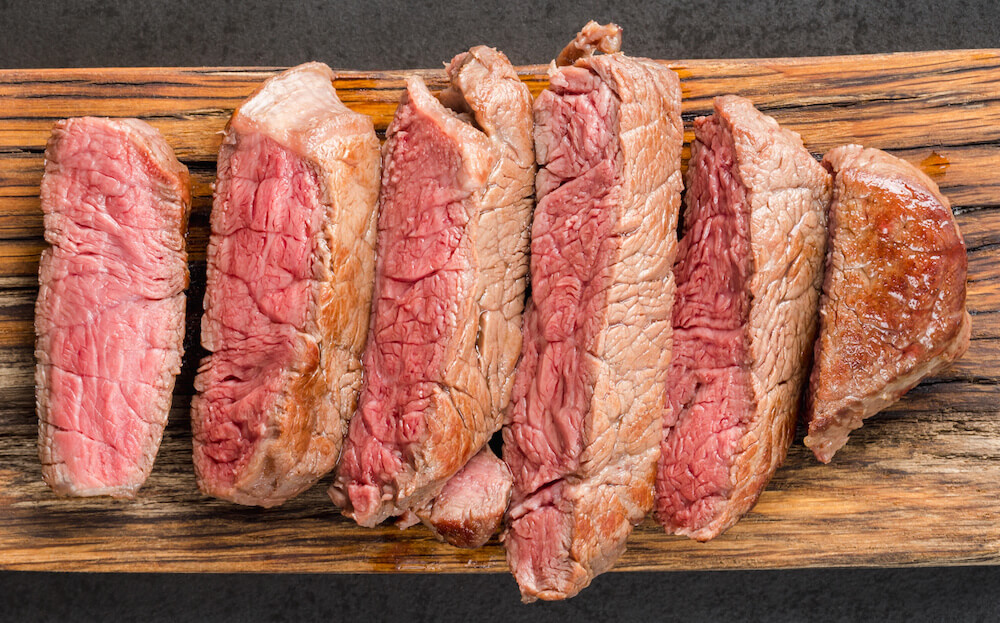
Another major benefit of sous vide cooking is that you will not experience any of the volume loss that you would get from conventional cooking. A steak that goes in 8 ounces will come out 8 ounces, because the plastic keeps it from drying out. Trapping the food in its own juices as it cooks also makes it more flavorful and helps to preserve more of the nutrients, while also eliminating the need for added fats like cooking oils.
Limitations and Drawbacks
As with anything, sous vide cooking is not perfect.
For one thing, it takes longer than conventional cooking. Expect that steak to be underwater for an hour or more. Even though the temperature transfer in sous vide cooking is more efficient, that doesn’t mean it’s fast. Keep in mind, however, that the cooking time is entirely hands-off, so you can go do whatever you want while your food takes care of itself. This tends to make the time go by faster.
Another concern for many people is that sous vide cooking uses plastic. And no, there’s no other option.
Most of people’s fears of cooking in plastic containers comes from the fact that certain chemicals, like phthalates and BPA, have been linked to birth defects, cancer, and all kinds of other things you would like to avoid. However, food grade plastics (including ziploc-style bags) no longer contain these chemicals. Also, the lower temperatures used in sous vide cooking reduce the chances that the plastic degrades at all. Does that mean plastics are 100% guaranteed to be safe? Of course not; but then again, nothing is. Sous vide enthusiasts maintain that modern plastics are safe to cook in, and as of now there is no evidence to suggest that they’re wrong. But some people just can’t get past the issue of heating their food in a plastic bag. If you’re one of them, then sous vide is probably not for you.
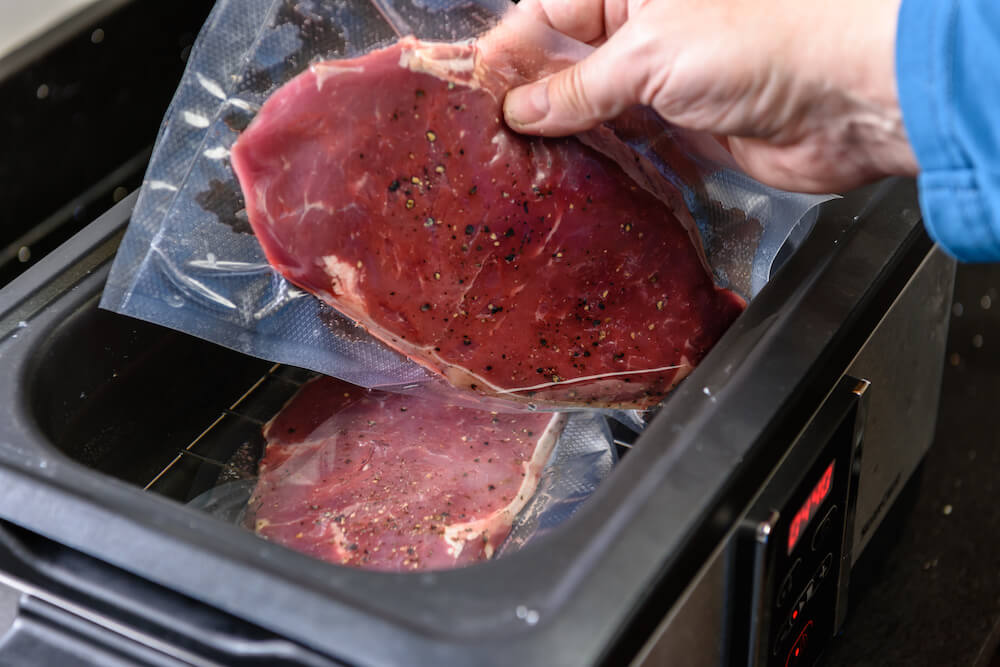
If you’re worried about the environmental impact of plastics, this is another valid concern. However, sous vide bags can be washed and reused more or less indefinitely, with the (recommended) exception of the ones you use to cook raw meat. If you plan to reuse, you may want to invest in high quality sous vide bags. The only drawback is that you will probably need a vacuum sealer, as sous vide bags usually come in a continuous roll that you seal off yourself.
Sous Vide Can Revolutionize the Way You Cook
The convenience and consistency of sous vide cookers are bound to make them increasingly popular as more people become familiar with the technique. Sous vide cookers can make a fantastic gift for anyone who knows their way around the kitchen even a little. The best part is that they don’t have to love cooking, or be that good at it, to use one. Just set the temperature, bag up the food, and drop it in. The rest takes care of itself.
It is also probably the only realistic way for most people to wow their friends with high-end restaurant quality meals. When they use a sous vide cooker to prepare dinner for their guests, they can expect them to be astounded. Whether they let anyone in on the secret is up to them.
